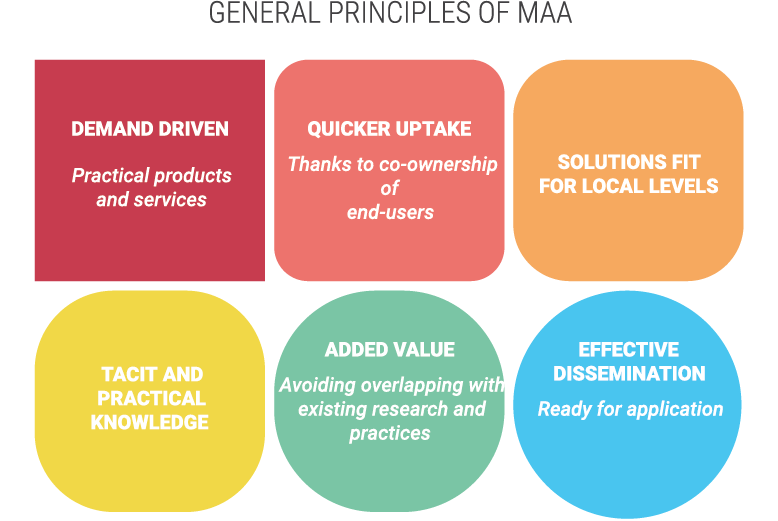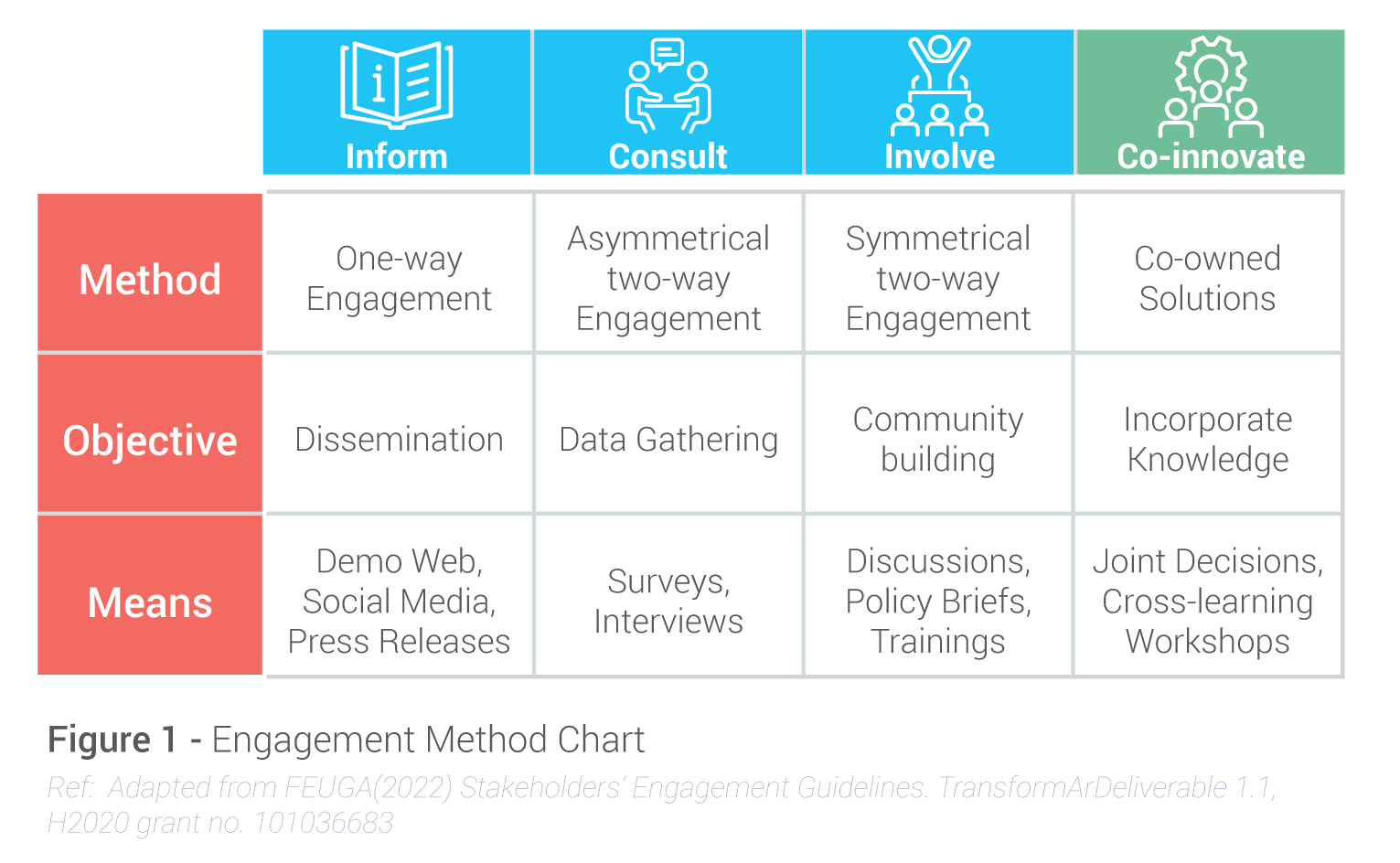
How to engage your stakeholders?
Download playbookOn this page we will give a short overview of the basic concepts and procedures for involving demonstrator communities and engaging with stakeholders. For each region there are Key Community Systems (KCS), these represent the territory’s viable sectors and systems and the ones that are most vulnerable to climate impacts. Engaging the right people within these KCS is vital to implementing successful change. You can find more detailed information about engaging stakeholders on chapter 2 in the playbook.
Co-innovation: a tool to tackle climate change
In order to achieve meaningful impact we will have to involve stakeholders that have local knowledge of the environment and the socio-economic system. One of the main focus points throughout the engagements with stakeholders will be to demonstrate the potential and effectiveness of co-innovation as a tool to achieve transformational adaptation. Without local stakeholder support and end user acceptance, no measure will be implemented in a sustainable and enduring way.
Multi actor approach (maa) concept
The basis for a successful engagement lies in the Multi-Actor Approach (MAA) concept, with a goal to trigger interactive innovation across the whole value chain, whilst tackling demand-driven, actual needs of involved and impacted climate stakeholders. This means that the sessions you will be conducting must focus on real problems and address tangible concerns of the end users. In order to co-innovate, it is essential to involve stakeholders from the very beginning of any desired solution, building communities of practice, making them part of the decision-making, implementation and evaluation. It also means that partners with complementary types of knowledge – scientific, practical and other – must join forces in the project activities from beginning to end.
Adopting a co-innovation mindset
Co-innovation is about constant communication. Stakeholders deserve similar resources to those available to organizing partners, for this brings a sense of belonging and trust. That is why the process should structure all of the gathered and developed information in an accessible bottom-up approach, that allows:
- Sharing broad, practical information and practice abstracts
- Cross-learning via workshops, frequent discussions (interactive innovation)
- Collaborative adaptation with peer reviews and sparring partners
- Connecting innovation brokers and multipliers
It is sometimes important to address key stakeholders in their local languages, and
to consider socio-economic particularities, needs and feelings prior to engaging
with them.
The result of co-innovation is co-ownership, which is then transformed into trust and
early adoption.

Engaging with your stakeholders
Multiple tactics can be employed to ensure meaningful engagement with your stakeholders. It is important to understand what type of actions are being undertaken at what time. Are we merely informing, consulting, or involving them with a specific objective in mind? The means and tools to engage differ in each of these situations.
- Important to keep focus and make clear expectations for stakeholders during sessions.
- Engagement methods must also take into account availability and motivation of stakeholders.
- Continued feedback from stakeholders is paramount.
- Demo facilitators conduct the engagement itself with support from technical support partners.

Managing conflict
Issues might arise during the project regarding stakeholders’ conflicts of interest.
- Incorporating stakeholder identification, stakeholder prioritization and analysis can make it easier to identify potential conflicts and manage them.
- Stakeholders may develop a lack of confidence in the project, either as a result of feeling that their concerns and opinions have not been addressed or that risks are not being adequately managed.
- The process of stakeholder analysis and engagement may help foresee the risks and opportunities that a stakeholder can bring across the project lifecycle, and the impact of not putting a suitable strategy in place.
